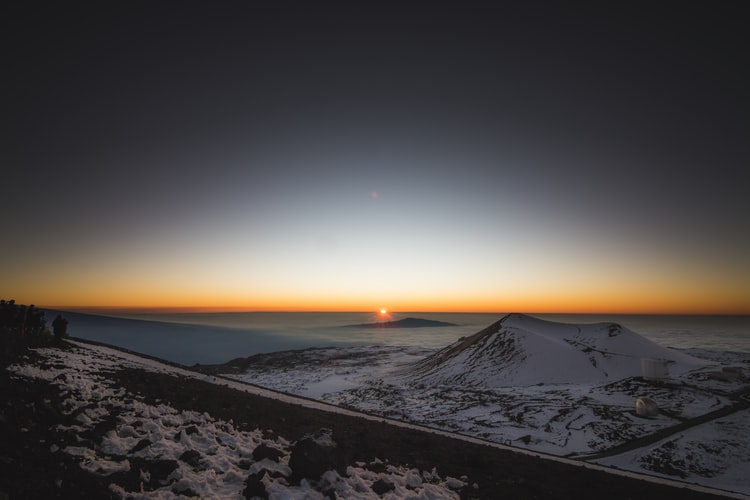
HONOLULU — Thousands of protesters joined a swelling effort Wednesday to stop construction of a telescope they have long tried to keep off a mountain considered sacred to some Native Hawaiians, blocking a road to Hawaii’s highest peak and prompting the arrest of a group of elderly demonstrators.
Hawaii County Managing Director Wil Okabe said about 2,000 people packed the base of Mauna Kea after the arrests, more than three times the number of protesters who had showed up in previous days.
Police in riot gear temporarily lined the road to the top of the Big Island mountain, which is valued by astronomers for its consistently clear weather and minimal light pollution and the site for the $1.4 billion Thirty Meter Telescope, expected to be one of the world’s most advanced.
Protest leader Kealoha Pisciotta told The Associated Press that police took away about 30 elders who were prepared to be arrested as they blocked the road.
“They’re taking our kupuna,” Pisciotta said, using the Hawaiian word for elders and sobbing. Around her, people sang “Hawaii Aloha,” a Hawaiian song that’s common at events.
Some of the elders being arrested used canes and strollers to walk, while others were taken in wheelchairs to police vans. Those who could walk on their own were led away with their hands in zip ties.
State spokesman Dan Dennison 33 people were arrested, given citations and released.
Walter Ritte, one of the protesters arrested, said he was driven down the mountain and later went back to the base of Mauna Kea but won’t block the road again Wednesday.
“But tomorrow is another day, and we’re free to do whatever we want tomorrow,” Ritte said.
Hawaii Gov. David Ige signed an emergency proclamation Wednesday giving law enforcement agencies the power to close off areas and restrict access on Mauna Kea.
The state hadn’t decided whether to remove protesters from the mountain but that is one option the proclamation makes available, Ige said.
“We’ve been patient in trying to allow the protesters to express their feelings about the project,” Ige said. “We are taking steps to assure the rights of those in the project to get the project moving.”
The governor said law enforcement has been patient and respectful toward protesters. He said protesters are illegally occupying roads and highways.
Native Hawaiian protesters and other opponents of the Thirty Meter Telescope say they are concerned that construction will desecrate and damage the mountain.
The project has been delayed by years of legal battles and demonstrations. Last year, the Hawaii Supreme Court ruled that telescope officials had legally obtained a permit, clearing the way for construction to begin.
But protesters are still fighting at the mountain and in court, filing a lawsuit last week that said the project must post a security bond equivalent to the construction contract cost before starting to build.
Telescope officials said the challenge has no merit and is another delay tactic.
Kaho’okahi Kanuha, a protest leader, told reporters Tuesday that efforts to stop the telescope were about protecting Hawaii’s indigenous people.
“This is about our right to exist,” he said. “We fight and resist and we stand, or we disappear forever.”
Other Native Hawaiians say they don’t believe the project will desecrate Mauna Kea. Most of the cultural practices on the mountain take place away from the summit, said Annette Reyes, a Native Hawaiian from the Big Island.
“It’s going to be out of sight, out of mind,” she said.
Authorities closed the road to the mountain Monday to allow construction to begin, attracting hundreds of protesters who formed their own roadblocks.
The blockade forced astronomers to stop operating 13 existing telescopes on the mountain Tuesday. Dozens of researchers from around the globe won’t be able to gather data and study the sky.
Observations won’t resume until staffers have consistent access to the summit, which is needed to ensure their safety, said Jessica Dempsey, deputy director of the East Asian Observatory, one of the existing telescopes.
“Our science time is precious, but in this case, our priority is just to make sure all of our staff is safe,” Dempsey said.
———
Associated Press journalist Audrey McAvoy in Honolulu contributed.